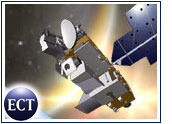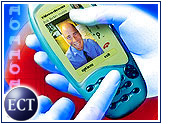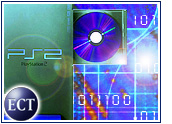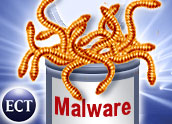
Lexar Media is shipping the world’s first 4-GB CompactFlash memory card. Specifically designed for professional photographers shooting high-resolution images — and priced at an industry high of US$1,499 — the card can store about 600 images captured in raw mode using a 6-megapixel camera.
Amateur photographers shooting with lower-resolution cameras can expect to capture as many as 45,000 JPEG images using the card. The actual number of images a 4-GB card can store depends on camera quality, picture resolution and image file format.
CompactFlash is one of the oldest nonvolatile memory types. However, many analysts believe it still has some life left in it. “We do not question the long-term viability of the CompactFlash format,” IDC analyst Allen Liebovitch told TechNewsWorld. “But we do believe it will gradually lose share on a global basis to other, smaller-form-factor cards.”
“It remains favored over rotating media because it is more durable, lighter and generally consumes less power,” industry analyst Rob Enderle told TechNewsWorld. “CompactFlash was expected to [have replaced] most other media types by now, but issues over price and useful life have relegated it to areas like music and pictures, where it plays best.”
Photo Toolbox
Lexar designed the 4-GB memory card specifically for professional photographers who shoot about 600 raw images each day.
While the CompactFlash form factor is physically larger than other cards — like SmartMedia or SecureDigital cards — IDC’s Liebovitch said he thinks size is not a particularly important factor for the photographer market Lexar is targeting.
Enderle agreed, pointing out that, for the most part, the CompactFlash format seems to have followed Moore’s Law, doubling in capability every 18 months. “But in the long term, we likely will hit density problems that will force us to another standard,” Enderle noted. “For now, it remains the best value in solid-state, nonvolatile memory.”
The 4-GB card is rated at 40X speed, a rating that makes the card capable of a sustained minimum write speed of 6 Mbps. The 4-GB card also features what the company calls write acceleration (WA) technology to achieve greater speeds in WA-enabled cameras.
Lexar Media Image Rescue software is included for free with the 4-GB card, enabling photographers to recover deleted or seemingly lost images, or permanently erase the card to prevent future image recovery.
Size Issue
Commercial, wedding, celebrity, fashion and sports photographers often shoot hundreds of images uninterrupted, and many shoot in raw or TIFF mode to capture the highest-quality image possible.
Because professional cameras can generate raw files that are over 9 MB in size and TIFF files in excess of 15 MB, extremely high-capacity CompactFlash cards, such as the Lexar 4-GB card, are becoming a necessity.
“By allowing this large number of high-quality images to be saved on one CompactFlash card, we expect professional photographers to shoot the highest-quality image possible,” said John Omvik, Lexar Media’s director of marketing.
File Standards
The 4-GB card is CompactFlash Type II and requires the host camera to support the FAT32 file system. Most digital cameras today support the FAT16 file system, but the FAT16 system only supports data up to 2 GB. All CompactFlash cards above 2 GB require the camera to support the FAT32 file system.
Most higher-end camera models being introduced today will support the new FAT32 standard.
In addition to the specific requirements for certain versions of CompactFlash cards, there has been a great deal of confusion surrounding the other flash formats.
“The biggest problem remains multiple standards, from CompactFlash, to MemoryStick, to SecureDigital,” Enderle told TechNewsWorld. “This lack of standardization is holding up costs and holding down sales. The market likes one standard, and the lack of this standard is building a foundation for the eventual replacement of CompactFlash by something else.”





















































